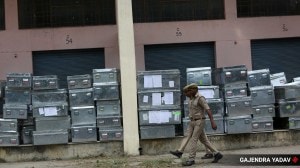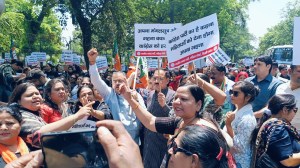- India
- International
West Bengal 2019: Topsy-turvy times
While the first decade of the 21st century saw the emergence of Trinamool, the last year of the second decade saw the party facing a new challenger.
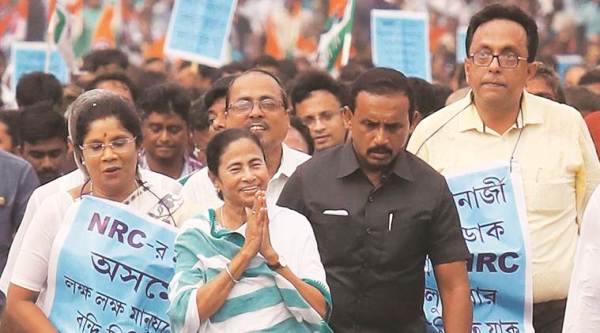 For Trinamool Congress chief Mamata Banerjee 2019 was a year of lows and highs. After the party’s below par performance in the Lok Sabha elections, she took the mantle of the opposition over citizenship law and NRC to corner the BJP. (Source: Partha Paul &ANI)
For Trinamool Congress chief Mamata Banerjee 2019 was a year of lows and highs. After the party’s below par performance in the Lok Sabha elections, she took the mantle of the opposition over citizenship law and NRC to corner the BJP. (Source: Partha Paul &ANI)
The Challenger
The first half of 2019 witnessed an upheaval in the political landscape of West Bengal, paving the way for the BJP to emerge as the main challenger of the ruling Trinamool Congress in the state, while relegating the Congress and once-powerful Left Front to the fringes.
The Lok Sabha elections, which was spread across seven phases in the state and witnessed in violent protests on the streets of Kolkata after a rally of BJP president Amit Shah, saw the saffron party making massive electoral gains. The BJP, which had won two seats five years ago, won 18 of the 42 parliamentary constituencies, its vote share rising to 40.30%— just three percentage points less than Trinamool’s — and winning seats from north Bengal to Jangalmahal.
The Trinamool Congress, now, limited to only 22 seats, down from 34, lost in key battlefields like Barrackpore, Bongaon and Hooghly. The election results in May left Trinamool Congress politically bruised, especially for its party chief supremo Mamata Banerjee, who at the onset of the Lok Sabha election campaign had put forth herself at the centre of the non-Congress Opposition front, meeting key leaders — from TDP chief Chandrababu Naidu to TRS chief K Chandrasekhar Rao.
The Lok Sabha results led to a domino effect in Bengal’s political allegiance. It began with a string of TMC MLAs joining the BJP. The BJP also got hold of six civic bodies in North 24 Parganas district — Bhatpara, Kanchrapara, Naihati, Halisahar, Garulia and Bongaon — after engineering defections. The BJP’s coup d’état in the Trinamool-run civic bodies, however, was shortlived as the TMC successfully retained power in all of them, barring Bhatpara, by the end of the year.

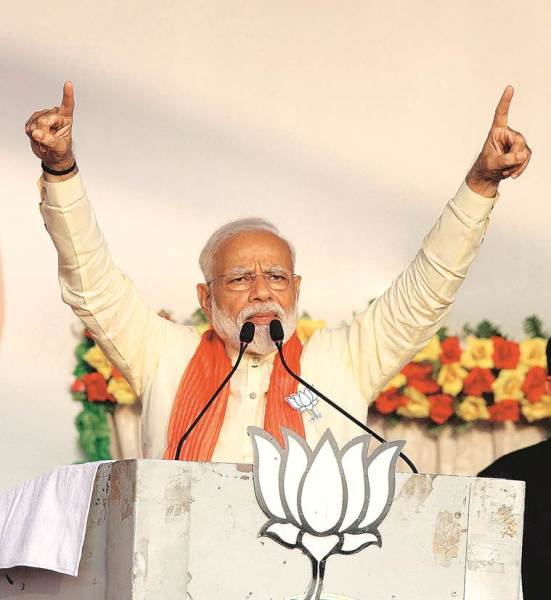 Prime Minister Narendra Modi campaigns for BJP at Mathurapur in South 24 Parganas for Lok Sabha elections in Apri. (Source: Partha Paul &ANI)
Prime Minister Narendra Modi campaigns for BJP at Mathurapur in South 24 Parganas for Lok Sabha elections in Apri. (Source: Partha Paul &ANI)
A Challenge
Patients and their families wait outside deserted counters of SSKM Hospital in Kolkata in June following the doctors’ strike. (Source: Partha Paul &ANI)A protest by doctors that began at Kolkata’s Nil Ratan Sircar Medical College and Hospital (NRSMCH) against the assault on two junior doctors by a patient’s kin on June 11 soon spread across the country.
As the strike extended, leaving patients across the state in a lurch and the bringing healthcare system to a grinding halt, Chief Minister Mamata Banerjee’s gave an ultimatum to striking doctors to get back to their jobs, which aggravated the matter. The striking junior doctors, who were demanding the CM’s direct intervention to resolve the impasse, viewed her comments as a threat, and defied her deadline to join work. They continued with their stir for “security and justice”. In a rare show of solidarity, many doctors from corporate-run hospitals too supported the protest. The resident doctors at the premier hospital wore black badges, bandages and helmets at workplace. For the first time, senior doctors resigned en masse. The Indian Medical Association sought the intervention of Prime Minister Narendra Modi and Union Home Minister Amit Shah.
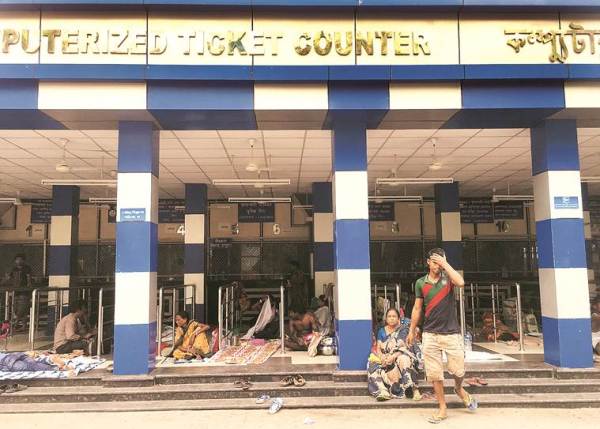
On the sixth day of the strike, Mamata Banerjee managed to break the deadlock when she met a delegation of 31 junior doctors and medical students in the presence of senior administrative and police officials.
Since then, several steps have been taken by the state government to ensure the safety of doctors at government hospitals — from extra security outside emergency wards to the installation of a panic button in the wards directly connected to the police. The protesting doctors’ demand for including them in Rogi Kalyan Samiti too have been fulfilled by the government.
Testing Time
On June 22, Chief Minister Mamata Banerjee, while speaking at a meeting of party’s district unit leaders, warned them against taking “cut money” from people. She was referring to party leaders taking bribes from people for enlisting them in several state and central schemes. Mamata spoke about it after several leaders pointed to the culture of ‘cut money’ as the reason for the party losing support during the Lok Sabha elections. But the two words — cut money — spread like a wildfire and became one of the burning issues in Bengal. As the Opposition parties, especially the BJP, latched on to the issue, locals in different districts gheraoed, drove away local TMC leaders and vandalised their properties, demanding the return of their ‘cut money’.
The cut money agitations, according to political experts, were one of the reasons which made the party rope in political strategist Prashant Kishor. Cornered, TMC launched ‘Didi Ke Bolo’ campaign in July under which any person could lodge a complaint directly with the Chief Minister. The party also made its MPs, MLAs and other leaders visit villages and spend a night to hear about people’s problems. The move was a success as within 30 days the party received 10 lakh responses. According to Trinamool Congress, 32% of the responses were suggestions, 42% were complaints and 22% were appreciatory messages. Four per cent were categorised as ‘miscellaneous’.
By a couple of months, the cut money agitations died down. However, it is to be seen if the issue will have any impact on the upcoming polls in the state.
Telly tussle
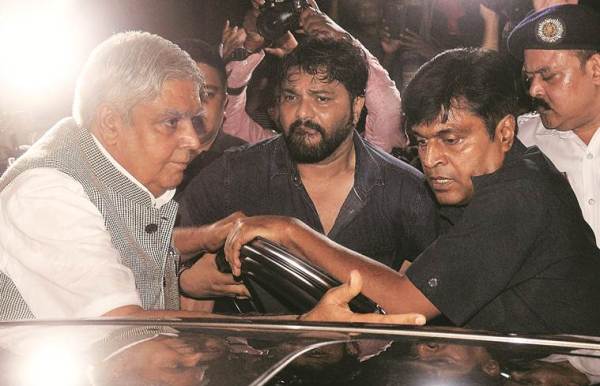
Governor Jagdeep Dhankhar comes to rescue of Union minister and BJP MP Babul Supriyo after the latter was gheraoed by students of Jadavpur University in September. (Source: Partha Paul &ANI)On the day Jagdeep Dhankhar took oath at Raj Bhavan as the 23rd Governor of West Bengal, Chief Minister Mamata Banerjee was seen serving him a cup of tea. But the bonhomie lasted for only a few weeks. In the third week on September, when Union minister Babul Supriyo was gheraoed by the students at Jadavpur University, the Governor allegedly against the advice of Chief Minister, rushed to the campus to escort him back. Since then, the relations between the state government and the Governor went downhill.
On a visit to Siliguri, the Governor complained that not a single senior official of the district administration turned up to a review meeting. This was followed by him getting “hurt” at government-organised Durga Puja carnival. His impromptu visit to a Singur office and complaint of not being allotted a chopper ride to north Bengal angered the government as the ruling TMC accused the Governor of trying to run a parallel administration and dubbed him as a “BJP agent”. During Kali Puja, the CM tried to break the ice by inviting the Governor to her house, but a few weeks later, the Governor complained of not being given due respect at a special session of the Assembly to commemorate the Constitution Day. Till date, the relations between the government and Governor remains tumultuous, and the last word on this is yet to be written.
The game
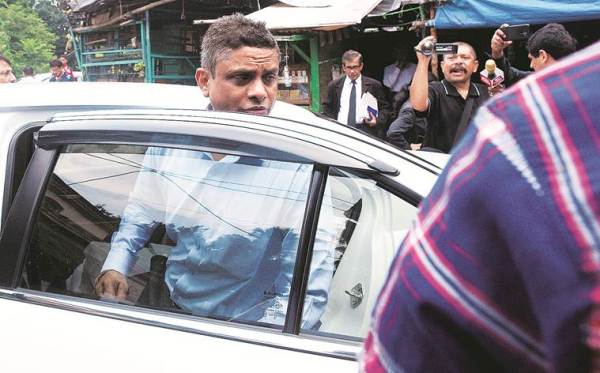 Former Kolkata Police chief Rajeev Kumar at a court in Alipore after remaining elusive for three weeks in September. (Source: Partha Paul &ANI)
Former Kolkata Police chief Rajeev Kumar at a court in Alipore after remaining elusive for three weeks in September. (Source: Partha Paul &ANI)
Former Kolkata Police chief Rajeev Kumar became the flashpoint of a face-off between the state government and the Central Bureau of Investigation (CBI). While the CBI looked for Kumar in connection with the Saradha chit fund case, saying that the IPS officer had destroyed crucial evidence to shield political leaders, the TMC government backed him to the hilt. The three weeks of September turned dramatic with CBI officials looking for him in Kolkata and elsewhere, while the top cop remained elusive. Then one day, Kumar, turned up before the Alipore court in Kolkata only after he was granted anticipatory bail.
New Front
The year that began on a beleaguered note for TMC and its chief, Mamata Banerjee, took a positive swing towards the end with the issue of National Register of Citizens (NRC) coming to haunt the BJP in the state. This after the NRC exercise in neighbouring Assam, which the BJP claimed to take credit for, left more than 19 lakh people, mostly Hindus, stateless. Soon, the NRC fear gripped West Bengal as the BJP leaders started saying that the exercise will be carried out across the country and especially in Bengal that shares border with Bangladesh just like Assam. As reports of people committing suicide over documents started to pour in, Chief Minister Mamata Banerjee promised to not implement NRC in the state.
Even as the BJP tried to assure Hindus that they should not fear about NRC as they would get citizenship under the new citizenship law (CAA), the CAA-NRC became a potent issue for the TMC to hit out at the BJP. After opposing the passage of the citizenship law in Parliament, Mamata Banerjee has hit the streets almost on a daily basis. Her government even suspended the survey of updating the National Population Register (NPR), which her party says is a precursor to the contentious NRC. As protests against the CAA and NRC spread across the country, Mamata Banerjee has emerged as the pivot of the Opposition’s front against it.
With civic polls due next year and Assembly elections in 2021, the jury is still out how the CAA-NRC would play out in the changing political matrix of the state.
TailPiece
For the TMC, the year ended on a sweet note as it swept the three Assembly seats — Kharagpur Sadar, Karimpur and Kaliaganj — that went to bypolls. The bypoll results were a severe jolt to the BJP, which lost Kharagpur Sadar seat from where state BJP chief Dilip Ghosh had won in the last Assembly polls. Political analysts attributed TMC’s win to the panic over NRC. Even the losing BJP candidates admitted that fear of NRC had affected the party’s prospects. With the BJP now going gung-ho with the new citizenship law as an antidote for non-Muslims fearing NRC, the TMC has stood steadfast on its opposition to CAA and NRC.
Triple murder that kicked political storm
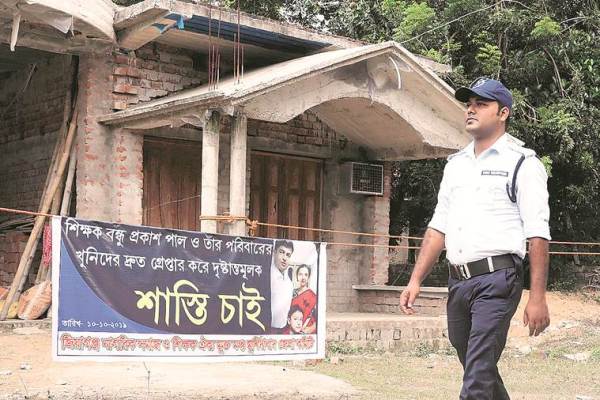 The house in Jiaganj town where the Pals were killed. (Source: Partha Paul)
The house in Jiaganj town where the Pals were killed. (Source: Partha Paul)
The gruesome murder of a 35-year-old teacher, his wife and their eight-year-old son in Jiaganj town of Murshidabad on Vijay Dashmi snowballed into a political storm after the BJP claimed that the deceased man was an RSS worker. As the Opposition party targeted the government over the law and order and claimed it to be political killing, the mother of the man denied that his deceased son was associated with any political party. Police in its investigation found the murder linked to financial reasons. Police arrested his former neighbour, who they said had killed the family over a monetary dispute related to an insurance policy.
Apr 24: Latest News
- 01
- 02
- 03
- 04
- 05
















